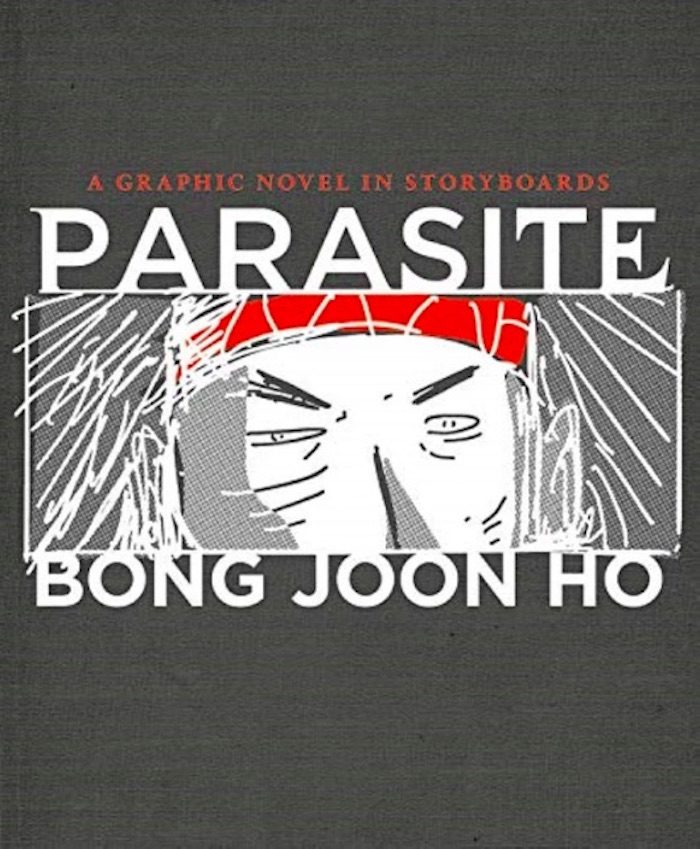7 Things We Learned From The 'Parasite' Storyboards Graphic Novel
We may receive a commission on purchases made from links.
Bong Joon-ho famously storyboards all of his films before he ever gets behind the camera. When the Oscar-winning director of Parasite gets on set, he doesn't hand his cast a script, he hands them a collection of detailed storyboards that are more akin to a comic book — a comparison that Bong's own Okja star Steven Yeun made, describing the "fully bound books" of the storyboards he received like a "manga."
Bong's meticulous storyboards are how he was able to shoot the Oscar-winning movie on a tight 77-day production schedule, and it's how Parasite will so easily transition to becoming a graphic novel with PARASITE: A Graphic Novel in Storyboards.
The graphic novel, which features a foreword written by the director and provides early concept drawings and production stills from the set, hit shelves today. It's a remarkable peek into the process of how the most miraculous Best Picture winner came to be.
We got an early preview of the graphic novel, which is available for order now, and gained insight into Bong's storytelling process and art skills, and learned a few things that didn't make the final cut of the movie, including a full version of the famous Jessica Jingle.
1. There's an Extended Version of the Jessica Jingle
The rest of the jingle (the tune of which is based on the famous South Korean children's song "Dokdo is Our Land") goes into the made-up backstory for Ki-jung's art tutor, which includes her parents' salaries, her fondness for paella and the K-pop star G-Dragon, as well as her impressive resume, including a job at UNICEF and an art gallery. A few other K-pop allusions were also cut, including Ki-woo naming Jessica after a Girls Generation group member.
2. Deleted Scenes Include Ki-jung Shoplifting, a Sex Scene with the Kim Parents, and a Day at the Hair Salon
Ki-jung's hair early in the storyboards appears to be a lot more choppy and unruly. So as the siblings discuss her new identity, she gets her hair done to prepare for her interview.An extended version of the discovery of the basement scene is also included, showing Ki-Taek failing to appeal to Moon-Gwang, to everyone's embarrassment.
3. There Are an Unusual Number of King Crabs
A king crab shows up during the flooding of the semi-basement, a darkly comic allusion that brings it back full circle to the king crab sticks the Park family feeds their dogs.
4. The Tension Between Ki-Taek and Dong-ik Ratcheted Up Before the Finale
In an extended version of the conversation between the Kim and Park fathers right before they plan to surprise birthday boy Da-song as "bad Indians," Ki-taek finally crosses the line that he had been tip-toeing until now. In a continuation of their conversation in the car about whether Dong-ik loves his wife, Ki-taek asks him the question again, only for Dong-ik to brush it off. But Ki-taek goes a step further, touching Dong-ik's headdress to adjust it and coming in close enough to sniff Dong-ik's face. "There is a strange tension between the two," Bong writes.
5. The Final Shot of the Scholar's Rock is Actually Its Discovery
Towards the end of the film, we see the scholar's rock, the "metaphorical" impetus for this whole string of events that Ki-woo clings to so desperately, placed back in the river, as innocuous as the other rocks beside it. But the storyboards actually intended that final shot of the scholar's rock to be its original "discovery" in a stream. The shot seems to be reversed in the film.
6. Bong Plans Out Stunts and When Stunt Doubles Come In
Bong draws out how the stunts will play out, including where the stunt people will come in to do the hard-hitting action and what the camera set-up will look like. Often he has to improvise when there is no proper equipment to pull off the action he envisions (he gets resourceful with a mattress for the fight between the Kim family and the former housekeeper's family).
7. Bong has Three Alternate Endings
There are three alternate endings that Bong draws out. One shows Ki-woo on the snowy mountain, staring at the Park Mansion surrounded by the glittering lights of countless other wealthy mansions "as if each of them is sending signals" after he narrates the letter to his dad. It's the most bleak ending, as Ki-woo realizes he has no way to get his letter to his dad.
The second is a variation of the final ending, with Ki-woo narrating the letter while standing on the mountain, letter in hand. He trudges through the snow off the mountain, and the film cuts to a final shot of Ki-woo, still in his outdoor gear, smoking a cigarette under the semi-basement window.
The last ending begins with him on the mountain, narrating the letter but this time without it in his hand. The camera descends from the snowy peak down to Ki-woo in his pajamas, reading the letter.
***
PARASITE: A Graphic Novel in Storyboards hits shelves May 19, 2020. Order the graphic novel here.
